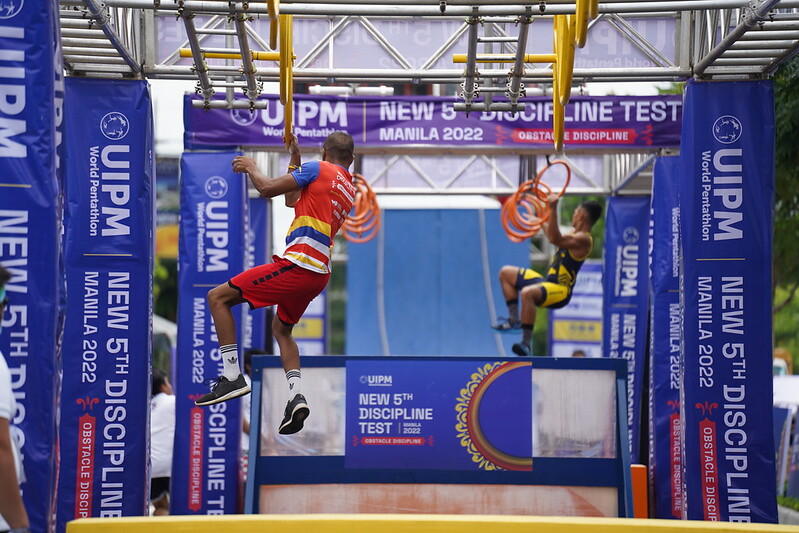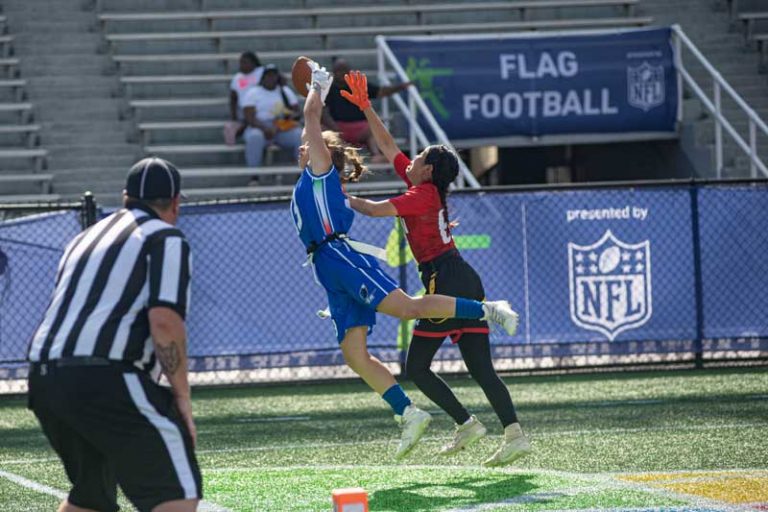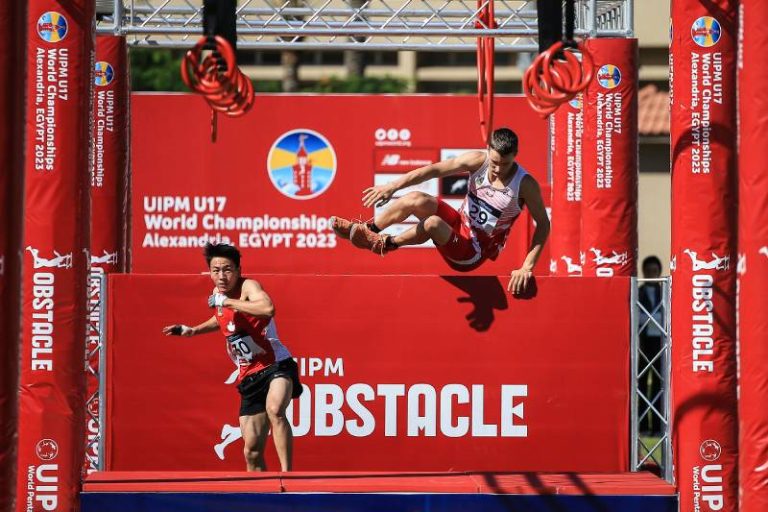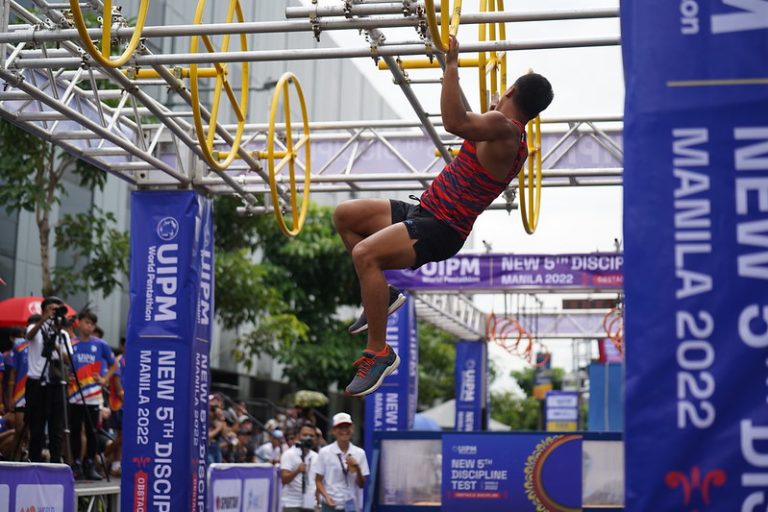Since 1912, Modern Pentathlon had been a lock to feature on the Olympic Games program. The sport consisting of five unique combined disciplines is said to have been first conceived by the founder of the modern Olympic Games, Pierre de Coubertin – but last year the International Olympic Committee (IOC) put the sport on notice forcing the Union Internationale de Pentathlon Moderne (UIPM) to earn its way on to the Los Angeles 2028 Olympics program.

Over the past decade, modern pentathlon has made significant changes to stay relevant, and indeed modern. Compressing the event into 90 minutes of competition at a single venue addressed the needs of both live and broadcast audiences. In 2012 the shooting event was adapted with laser pistols and combined with running, creating a safer event where spectators can get closer to the action and watch a more exhilarating final pursuit to the podium.
Fencing, swimming, riding, shooting and running completed the package intended to test the most well-rounded athletes – mimicking the event used to measure the best solders at the ancient Olympic Games. But an abrupt change made by the UIPM last year raised concern for the IOC, forcing the Executive Board to put the sport on probation.
An abuse incident caught on camera during the horse riding component at the Tokyo 2020 Games raised widespread concern about animal welfare, casting a dark shadow on the sport. The UIPM later decided to remove the discipline from modern pentathlon, concerning some athletes who felt left out of the discussion.
“I think we have been very clear and we were explicit about this right at the start that the athlete voice needed to be considered in the whole process,” IOC sport director Kit McConnell said in June.
Modern pentathlon decided to overcome one obstacle with another set of obstacles.
The UIPM formed a new focus group to find a replacement for riding and named Yasser Hefny, the Chairman of the Athletes Committee, to lead 26 athletes from 22 countries to evaluate options. Stakeholders suggested 61 different disciplines, and in May obstacle racing was announced as a candidate test event.
Hefny told GamesBids.com that obstacle racing is a perfect fit.
“Our sport requires training all the muscle groups in the body, as the sport tests the athlete’s ability in all fitness elements,” he said.
“Modern Pentathlon is the sport of the complete athlete, and the same can be said about obstacle racing – both events have military origins. So I see it as a sport that fits perfectly with the Modern Pentathlon heritage.”
Most people are already familiar with obstacle racing from various high-profile television competition programs starting with Tokyo Broadcasting System’s Sasuke, or the adapted American Ninja Warrior. Hefny says 300 million people watch these adventure race TV shows that are held in approximately 90 countries.
“Obstacle racing will significantly increase the audience and number of participants in our sport around the world, because it’s accessible, appealing, exciting, and it makes Modern Pentathlon more dynamic.”
UIPM says there are 30,000 permanent obstacle courses and training gyms worldwide and hundreds of thousands of obstacle playgrounds. With 20 million obstacle racers across the world, 250,000 are applying to compete in race shows.
Modern pentathlon is working with World Obstacle, the international governing body for the sport, to produce an event that tightly aligns with the IOC’s requirements that focus on priorities like accessibility and youth appeal. World Obstacle is not an Olympic recognized sport federation, but it is working towards future inclusion at multisport events including the Olympic Games. Partnership with UIPM could fast-track this goal.
The IOC has yet to comment on the viability of obstacle racing as the fifth discipline but will make a final decision on the sport’s inclusion on the LA 2028 program next May.
UIPM scheduled a series of test events to measure the appeal and viability of obstacle racing within the modern pentathlon community. The first was held in Ankara, Turkey at the end of June and survey respondents agreed overwhelmingly that the event was a success with 92 percent of pentathletes and 93 percent of observers answering that they were ‘satisfied’ or ‘very satisfied’ with the overall experience.
The test course consisted of ten obstacles including archer steps, sonic swing, 2.0m A-wall, double tilting ladders, balance beam, wheels, 1.5m wall, ring swing, giant steps and the warped wall.
A follow-up event was held in Manilla, Philippines earlier this month, receiving similar feedback, and a third youth-focused event will be staged in Lignano Sabbiadoro, Italy from September 9 to 10.
“One of the most amazing things about Manila was the different classifications for para athletes,” Hefny said.
“Accessibility and inclusion are integral for the continued success and growth of Modern Pentathlon. It was great to see para athletes clear so many obstacles.
“It was also great to see so many young people flow through the courses very smoothly with unbelievable smiles, excitement and enjoyment.”
After testing and evaluation the focus group will present options to the UIPM Congress to be held this year in Antigua, Guatemala from November 14-16, for a vote on the proposal to be submitted to the IOC for consideration at the LA 2028 Games.


